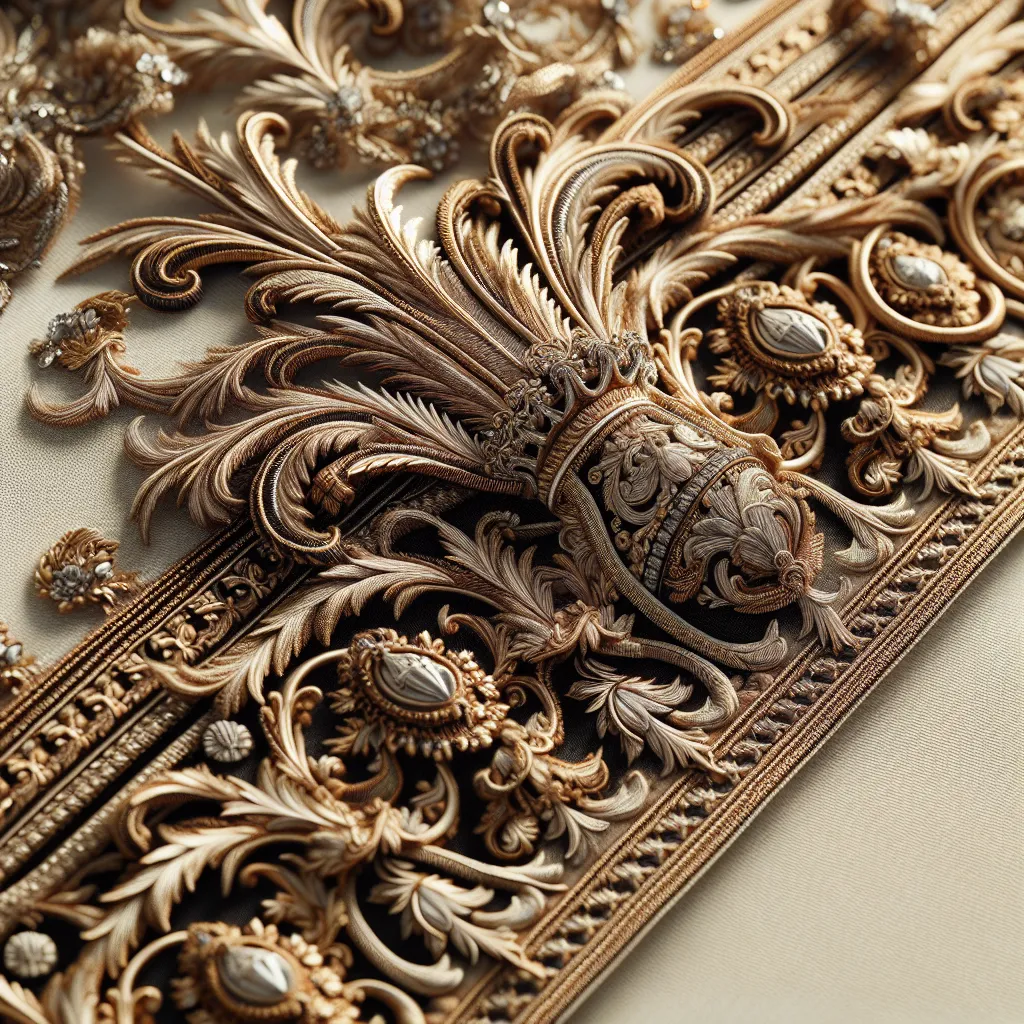The Origin of Fashion Trimmings: From Ancient Times to the Middle Ages
The history and evolution of fashion trimmings dates back to ancient times, with evidence of decorative elements being used to enhance clothing and accessories. From the intricate embroidery of ancient civilizations to the opulent trimmings of the Middle Ages, the origin of fashion trimmings reflects the cultural and social values of each era.
In ancient times, fashion trimmings served both practical and ornamental purposes. Embroidery, beads, and intricate weaving techniques were used to adorn garments, symbolizing status, wealth, and craftsmanship. For example, the Egyptians utilized elaborate embroidery and gold thread to embellish their clothing, emphasizing the importance of luxury and opulence in their society.
As civilizations evolved, so did the use of fashion trimmings. The Middle Ages saw the emergence of richly adorned garments adorned with fur, jewels, and intricate brocade trims. These opulent trimmings not only denoted wealth and social status but also reflected the religious and cultural influences of the time.
Fashion trimmings became an essential part of garments, representing the craftsmanship and artistry of skilled artisans. The intricate detailing and lavish adornments symbolized the wearer’s position in society and conveyed messages of power, prestige, and identity.
The evolution of fashion trimmings from ancient times to the Middle Ages laid the foundation for the incorporation of decorative elements in fashion, setting the stage for the continual transformation and innovation of trimmings in the centuries to come.
The use of fashion trimmings was not only a reflection of the trends and styles of the time but also a testament to the creativity and ingenuity of designers and artisans. This rich history provides a deep understanding of the significance of fashion trimmings and their enduring influence on contemporary fashion.
In conclusion, the origins of fashion trimmings from ancient times to the Middle Ages highlight the cultural, social, and artistic significance of these decorative elements. The evolution of fashion trimmings has been integral to the development of fashion, leaving a lasting impact on the way we perceive and appreciate adornment in clothing and accessories.
The Influence of Royal Courts on Fashion Trimmings
The history and evolution of fashion trimmings are closely intertwined with the influence of royal courts. Throughout history, royal courts have played a significant role in shaping fashion trends, including the use of trimmings to signify wealth, power, and social status. The opulence and extravagance of royal courts set the stage for the development of intricate and ornate trimmings that became synonymous with luxury and sophistication.
During the Renaissance period, European royal courts became the epicenter of fashion innovation, with monarchs and nobles showcasing their wealth and status through elaborate clothing embellishments. Trimmed garments, adorned with precious metals, intricate embroidery, and luxurious fabrics, became a symbol of prestige and nobility.
The French royal court, in particular, emerged as a trendsetter in the world of fashion trimmings. The lavish and ornate styles favored by the French monarchy often set the tone for fashion trends across Europe. The renowned craftsmanship of French artisans gave rise to exquisitely embellished trimmings that adorned the attire of nobles and aristocrats.
As the influence of royal courts permeated society, fashion trimmings became more accessible to the upper classes, contributing to the commercialization of trimmings and the emergence of specialized artisans and tradespeople. The demand for luxurious trimmings grew, leading to the establishment of dedicated workshops and guilds catering to the production of elaborate embellishments.
In conclusion, the influence of royal courts on fashion trimmings has been profound and enduring. From the opulence of the Renaissance courts to the iconic styles synonymous with French royalty, the evolution of fashion trimmings has been intricately linked to the sartorial choices of monarchs and nobles. The legacy of royal influence on fashion trimmings continues to resonate in contemporary design, reflecting a timeless synergy between regal elegance and sartorial opulence.
The Industrial Revolution and the Birth of Mass-Produced Fashion Trimmings
During the Industrial Revolution, the fashion industry underwent a profound transformation with the introduction of mass production techniques. This shift also had a significant impact on the production of fashion trimmings. Prior to this period, trimmings such as lace, ribbons, and braids were painstakingly crafted by hand, making them expensive and accessible only to the wealthy.
However, the emergence of mechanized production methods enabled the mass production of fashion trimmings, leading to increased accessibility and affordability for a wider population. Factories equipped with power looms and other innovative machinery were able to churn out large quantities of trims at a rapid pace, meeting the demand generated by the growing consumer market.
As a result, fashion trimmings became an integral part of the mass-produced garments that were increasingly available to the middle and lower classes. This democratization of fashion trimmings not only revolutionized the way people dressed but also contributed to the rise of ready-to-wear clothing. With affordable and readily available trims, individuals could personalize and embellish their clothing, adding individual flair to mass-produced garments.
The Industrial Revolution thus marked a pivotal moment in the history of fashion trimmings, paving the way for their widespread adoption and integration into mainstream fashion. This period set the stage for the ongoing evolution of trimmings, from their role in haute couture to their presence in everyday apparel, shaping the way we adorn and express ourselves through clothing.
Modern Trends in Fashion Trimmings and Sustainable Practices
Modern trends in fashion trimmings have evolved to reflect a growing emphasis on sustainable and ethical practices. As the fashion industry becomes more conscious of its environmental impact, designers and consumers alike are seeking out trimmings that align with their values. This shift has led to a surge in the use of eco-friendly materials such as organic cotton, recycled polyester, and plant-based dyes in the production of fashion trimmings. Additionally, the demand for cruelty-free alternatives has prompted the development of vegan leather, faux fur, and other animal-friendly options in trimmings.
Moreover, sustainable practices in fashion trimmings extend beyond materials to encompass production processes and supply chain transparency. Many companies are prioritizing ethical labor practices and seeking out local artisans and craftsmen to create unique, handcrafted trimmings. This not only supports traditional artisanal techniques but also fosters stronger connections between designers, producers, and consumers.
Furthermore, there is a growing trend towards minimalist and versatile trimmings that can be used across different garment styles, reducing the need for excessive consumption. This focus on longevity and multi-functionality aligns with the principles of sustainable fashion, encouraging investment in high-quality trimmings that can stand the test of time.
In conclusion, the modern trends in fashion trimmings are closely intertwined with the broader movement towards sustainability and ethical practices in the fashion industry. By embracing eco-friendly materials, ethical production methods, and versatile designs, fashion trimmings are evolving to meet the demands of conscientious consumers and contribute to a more sustainable future for fashion.

